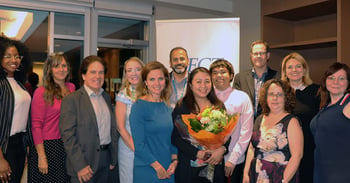
Words like “diversity” and “inclusion” have become popular buzzwords in recent years, but the truth is that they are so much more than just words. These terms represent a sense of belonging – something that all workplaces should be striving for.
Building a culture of belonging ensures that all employees feel a connection to the work they do and the company they do it for. Employees will not feel empowered to deliver their best work – or to go above and beyond expectations – if their environment is not inclusive, comfortable and safe. The goal of a truly diverse and inclusive culture is for every single employee to feel like they are equally seen, valued and respected for their authentic selves.
This is a tall order that requires an ongoing commitment and an innovative and open approach for workplaces, which starts with small intentional steps that will lead to long-term change.
Building a better future together
Diversity can mean many things. To me, it’s about celebrating what makes a person unique. If we all thought the same way and came to the table with the same ideas, the world would be a pretty boring place, as would our workplaces. Encouraging the perspectives of individuals with different experiences, both professional and personal, enables creativity and growth within an organization.
Furthermore, a culture that includes and encourages diverse perspectives, welcomes individuals to approach situations differently – and to build off each other’s ideas – often leads to more creative and innovative solutions. This not only empowers individuals at all levels across the organization but also empowers the industry as a whole.
Learning as we go
While a culture that fosters diversity, inclusion and belonging is the end goal, it’s important to remember that it takes time and consistency to accomplish this. An approach that works for one workplace may not work for others, and it’s important to remember not all employees are comfortable expressing themselves the same way.
To effectively monitor and improve company culture, organizations should utilize different approaches to seeking feedback. For example, employee surveys, regular meetings between employees and leaders and listening circles can be very effective. Regular, real–time feedback from team members is an important step to ensuring these approaches are meaningful or to understand when changes may be needed.
Lastly, advocating for and echoing unique perspectives will go a long way. This will empower employees and encourage them to share their viewpoints, fostering a culture of inclusion.
Creating a community
A culture of inclusion goes far beyond the walls of one organization. To truly create an industry that fosters diversity, inclusion and belonging, organizations should share their vision with external stakeholders and customers, and act in a way that aligns with that vision. Networking and engaging with external stakeholders will expose blind spots and foster a community of learning, which will benefit every organization. This will also position organizations to remain competitive, innovative and serve their employees and customers with a more open and collaborative lens.
At FCT, we strive to provide an inclusive and supportive environment. However, we understand that this will remain a work in progress. Enabling our employees to be authentic and innovative will be critical to the success of our organization and our industry. We remain invested in continuous learning, soliciting feedback and bringing diverse perspectives to life.
®Registered Trademark of First American Financial Corporation.

























